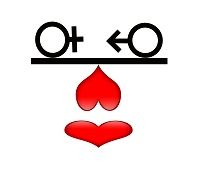Article
Sex Differences and Survival in Aortic Stenosis
Author(s):
In women with aortic stenosis (AS) survival is linked to whether resulting left ventricular hypertrophy (LVH) is adaptive or maladaptive. In men with AS, there is no such link, a German study found.

In women with aortic stenosis (AS) survival is linked to whether resulting left ventricular hypertrophy (LVH) is adaptive or maladaptive. In men with AS, there is no such link, a German study found.
Writing in the Journal of the American College of Cardiology, George Petrov, MD, MSc, and colleagues at the German Center for Cardiovascular Research in Berlin, Germany reported on a study of 128 patients with AS.
LVH develops as the heart’s response to wall stress. The remodeling maintains systolic function. But the condition also initiates a series of molecular events that can ultimately result in myocardial fibrosis, dilation, and heart failure. Even after successful aortic valve replacement (AVR) surgery to correct AS, patients do not respond uniformly, suggesting that genetic factors may be involved.
The changes in the hearts of women with AS are different from those in men with AS. Women tend to have a more concentric form of LVH with smaller ventricular diameters, greater relative wall thicknesses, and a better systolic function, the researchers found. Men with a comparable degree of pressure overload have a less concentric form of LVH, they show greater ventricular dilation and fibroses, decreased ejection fraction, and heart failure.
The condition can be corrected with AVR but tends to come back—particularly in women.
In the study, doctors took tissue samples from patients undergoing AVR and compared them with samples from cadaver hearts that had been destined for heart transplant but later discarded for a variety of reasons.
They found that in the men with AS undergoing AVR myocardial fibrosis was significantly more pronounced than in the women with AS. The men also showed a significant increase in TGFβ-1 protein, and phosphorylation of SMAD2. The women’s hearts tended to have thicker walls.
The researchers then used factor analysis to decide whether patients’ LVH was adaptive or maladaptive. Before surgery, women ha more adaptive LVH than men (62% vs. 45%). After AVR, women showed more adaptive LVH and less maladaptive LVH.
In the women, adaptive LVH was associated with longer survival, but in the men, it did not seem to matter.





